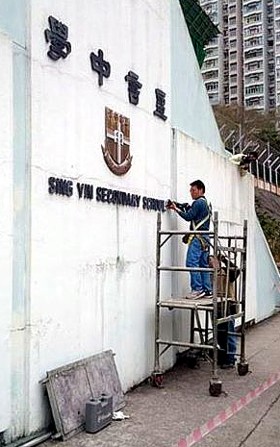Green Global Coalition Ties Two Schools For 2013 “Greenest School On Earth” Award
 February 11, 2014
February 11, 2014  Kyriaki (Sandy) Venetis
Kyriaki (Sandy) Venetis The Global Coalition For Green Schools has announced a tie of two winning schools – the Sing Yin Secondary School in Hong Kong, China, and the Waterbank School at Uaso Nyiro Primary in Laikipia, Kenya – for the 2013 Greenest School on Earth Award.
The coalition is an initiative of the Center for Green Schools at the U.S. Green Building Council, and the award was announced at the World Green Building Council Annual Congress.
 The Sing Yin Secondary School in Hong Kong, China.
The Sing Yin Secondary School in Hong Kong, China.
The Center for Green Schools said that the award’s goal is to “highlight a K-12 school that exemplifies how sustainability can be integrally woven into the infrastructure, culture, and curriculum of a school.”
The schools submitted for the award were evaluated for criteria, including: the efficient use of resources and reduced environmental impact; the enhanced quality of health and learning for students, teachers, and staff; and the emphasis on sustainability and resource-conservation education.
Rick Fedrizzi, president, CEO, and founding chair of the U.S. Green Building Council, said during the announcement that the aim of the award is “to showcase a school’s commitment to sustainability.
“But when we sat down to review this year’s submissions, we felt that we had two schools whose environmental efforts, though very different, were extraordinary in both execution and achievement.”
The two winning schools were each awarded $5,000 to put toward a new or ongoing sustainability project.




